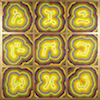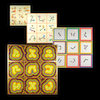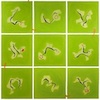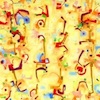|
PIET MONDRIAN: COMPOSITION, 1921
By PHILIP ANDERSSEN Published: Monday, 3 December 2012 |
|
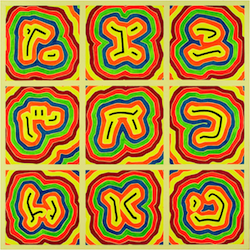
Perhaps one of the most seemingly intricate aspects of Mondrian's later work is to inquire on his true motivation for such art. This article is thus oriented towards finding a satisfying answer to that question. Does Mondrian wish merely to move our visual senses with this particular arrangement of different hues of blue, red, yellow and black? Does he wish for a higher interpretation? The work obviously does not suggest tension to the observer, since the colors are clearly not arranged in a way that such a feeling would be elicited. Then, what is it that this work is about? Perhaps more importantly, is this work about something? Is this, maybe, a composition about color?
A particular aspect of this work that lends itself particularly to analysis is the prevalence of the color blue. This color is present in three different hues, so then does Mondrian wish to communicate something through this color? Does this color have a special meaning? Or, from an opposite approach, does this color have any particular sensory characteristics?
What role do the delimiting black lines play in this composition? Is the intent sensory, which is perhaps evident, or is it rich in its content? The same color in these lines is also used in a different hue as one of the main components of the composition, perhaps suggesting other functions for this color black.
In essence, it seems to me that to inquire on Mondrian's intent in this composition amounts to determining whether it is a purely formalistic composition or an apparently formalistic composition loaded with meaning and content which do not become apparent until the observer becomes familiar with the artist's ideology.
comments powered by Disqus
| RELATED ARTICLES | |||||||||||
|
|
|
|
||||||||

